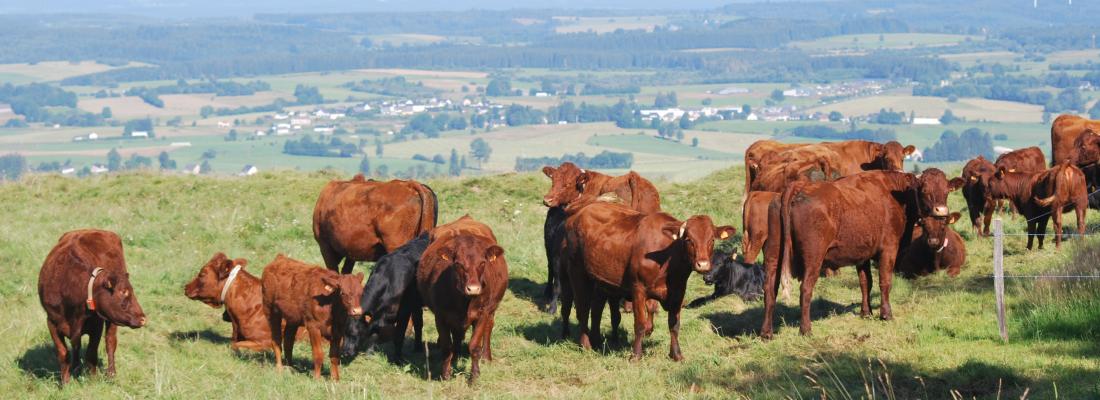Agroecology Reading time 7 min
Carcass characteristics and beef quality of young grass-fed Angus x Salers bovines
Published on 03 January 2023

To characterize carcass and meat attributes, such as beef eating quality in specific farming conditions, 31 young grass-fed crossbred Angus x Salers cattle in two farming systems (a mono-cattle system versus a mixed system with beef cattle and sheep) were used in this study. Three muscle cuts (striploin—m. longissimus dorsi et thoracis; bolar blade—m. triceps brachii caput longum; internal flank plate—m. obliquus internus abdominis) were used for consumer eating quality testing and striploin was used for panelist eating quality assessment, and objective measurements (Warner–Bratzler shear force (WBSF) and fatty acid (FA) and antioxidant contents).
Results indicated that the farming system had no impact on carcass characteristics or meat quality, but it tended to affect FA content, which is likely explained by between-system differences in animal maturity (assessed by ossification score).
Animal gender had significant effects on three eating quality traits evaluated by untrained consumers, with higher flavor liking, overall liking, and overall meat eating quality (MQ4) scores in females than in males. Additionally, FA contents were correlated with sensory quality traits to varying extents: consumer-scored tenderness, flavor, and overall liking were mainly positively correlated with omega 3 and omega 6 polyunsaturated fatty acid (PUFA) contents, and panelist-evaluated tenderness and abnormal flavor were more positively correlated with total lipids, saturated fatty acid (SFA), and monounsaturated fatty acid (MUFA) contents.
Overall, this study showed that specific grass-fed crossbred Angus x Salers cattle can produce lean meat rich in omega 3 PUFAs with a low omega 6/omega 3 ratio and with “better than average” beef eating quality.
Liu, J.J.; Ellies-Oury, M.P.; Pannier, L.; Gruffat, D.; Durand, D.; Noel, F.; Sepchat, B.; Legrand, I.; Prache, S.; Hocquette, J.F., 2022. Carcass Characteristics and Beef Quality of Young Grass-Fed Angus x Salers Bovines. Foods, 11 (16): 16 http://dx.doi.org/10.3390/foods11162493
